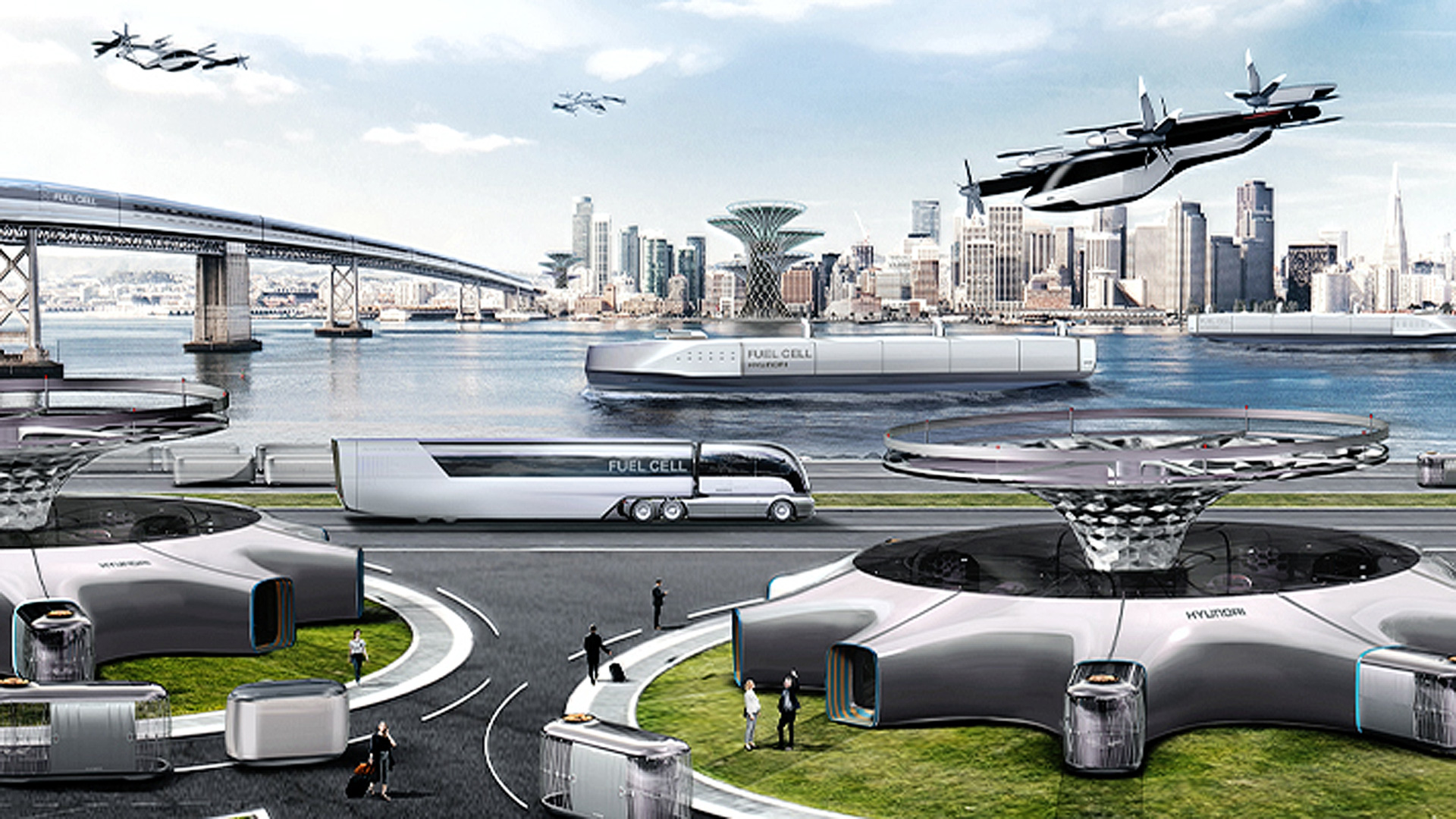
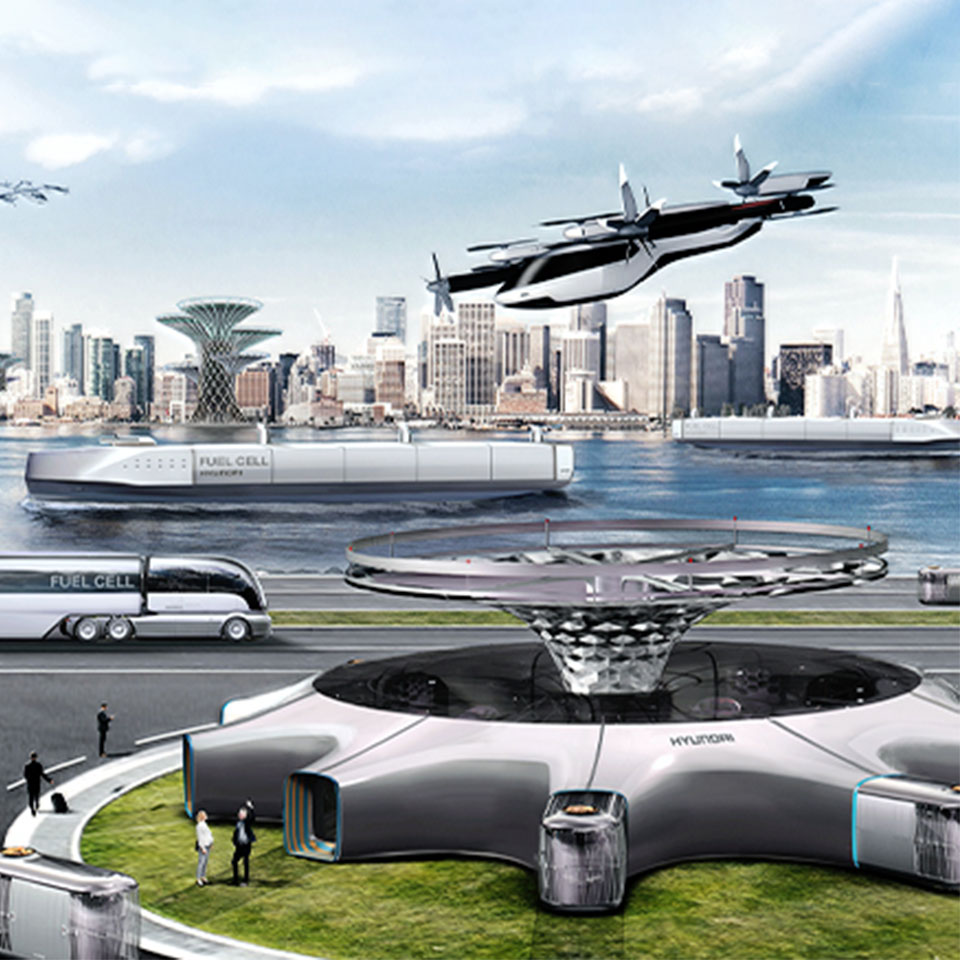


2020.07.24 Hyundai Motor Group
Now we all know that carbon is the main villain that is killing us all, hence the growing hydrogen fuel market. Europe, the US, and Japan had an early start in the Hydrogen Society, and South Korea also initiated a roadmap. Various corporations in the chemical, energy, or mobility industry have started to use hydrogen. How far have we come, by the way?
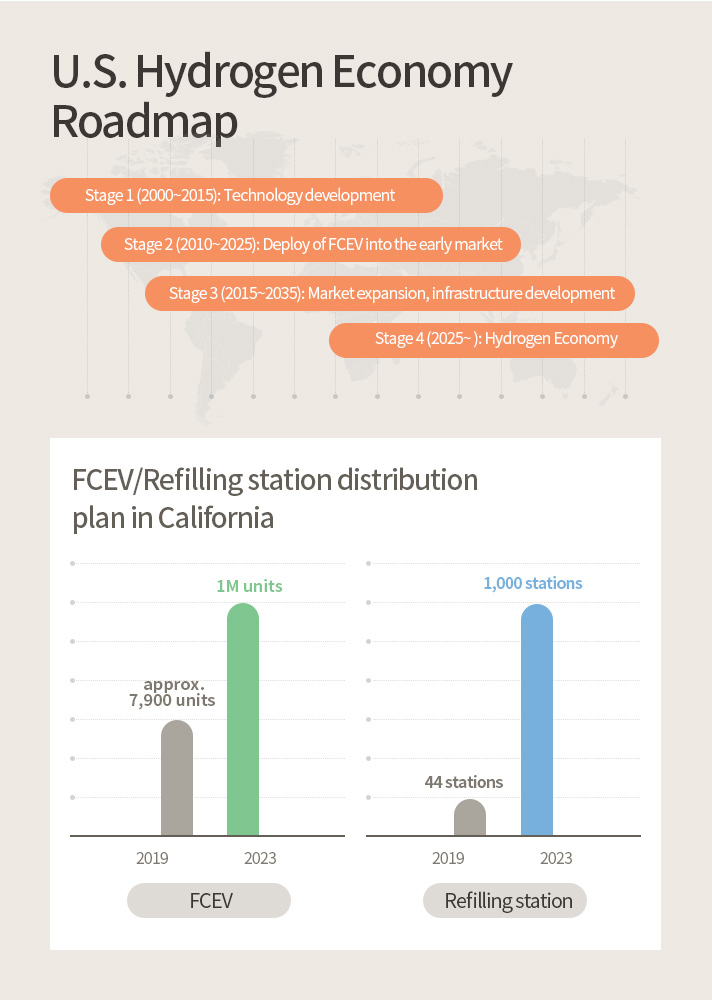
The U.S. government established a public-private collaboration 'H2FIRST' with H2USA to increase FCEV production. The U.S. has got most FCEVs, 7,937 (cumulative, 2019) units. And the country also aims to build enough amount of refilling stations. California is the most active among other states; currently, it has 45 stations, and they will invest 20 million dollars every year until 2023, to house 1,000 stations by 2030.
The country is also investing in producing and distributing hydrogen fuel. The Wind2H2 project, for example, symbolizes the development of future renewable electrolysis systems. The Wind2H2 project is a renewable hydrogen production facility that can operate multiple electrolyzers. It is known to be highly eco-friendly and cost-effective.
Nikola, a green truck maker established back in 2015, is developing a hydrogen truck that can offer more
than 1,200 miles between stops. The company plans to release the product in 2023.
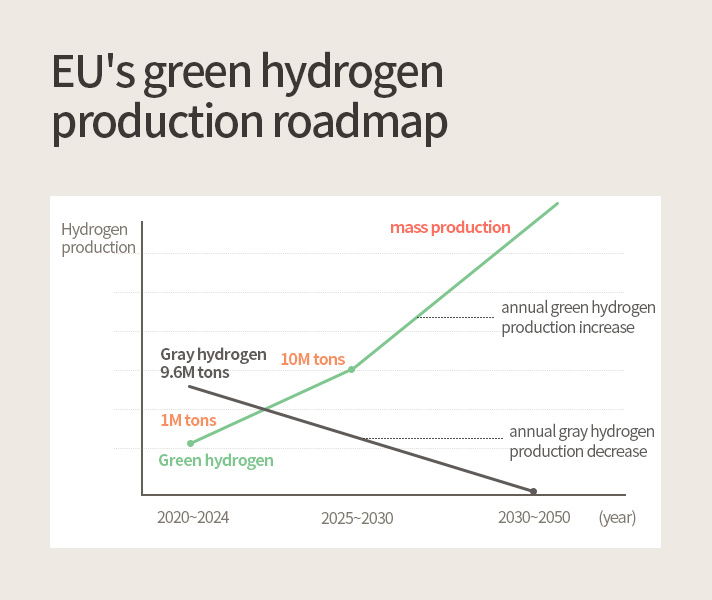
According to the announcement of the EU Strategy for Energy System Integration on July 8th, it will provide the framework for climate-neutrality1). The organization said the changing costs of innovative solutions have to be integrated into the way they operate their energy system. Energy system integration means that the system is planned and operated as a whole, linking different energy carriers, infrastructures, and consumer sectors. This connected and flexible system will be more efficient, and reduce costs for society. For example, this means a system where the electricity that fuels Europe's cars could come from the solar panels on our roofs, while our buildings are kept warm with heat from a nearby factory, and the factory is fuelled by clean hydrogen produced from offshore wind energy. This gradual transition will require a phased approach, according to the announcement:
By 2024, they will support the installation of at least 6 gigawatts of renewable hydrogen electrolyzers in the EU, and the production of up to one million tons of 'green' hydrogen. Green hydrogen is made by using clean electricity from renewable energy technologies to electrolyze water, and it does not emit CO2 at all. Though the EU produces 9.8 million tons of hydrogen already, the proportion of green hydrogen would be an important factor to achieve climate-neutral. And by 2030, hydrogen needs to become an intrinsic part of their integrated energy system, with at least 40 gigawatts of renewable hydrogen electrolyzers and the production of up to ten million tons of renewable hydrogen in the EU. Lastly, by 2050, renewable hydrogen technologies should reach maturity and be deployed at large scale across all hard-to-decarbonize sectors. To help deliver on this Strategy, the Commission is launching today the European Clean Hydrogen Alliance with industry leaders, civil society, national and regional ministers, and the European Investment Bank.
Germany seems to be guiding the rest of the countries to the hydrogen society so far. The German government announced hydrogen energy to be the future source of energy and plans to increase renewable energy production to 50% of total national energy production. The country has already unveiled the world's first hydrogen railways back in 2018. The German government also aims to produce 1.8 million FCEVs and 1,000 refilling stations by 2030.
1) Climate-neutrality is to minimize carbon emissions as much as possible, and using carbon offsets or other measures to mitigate the remaining emissions.
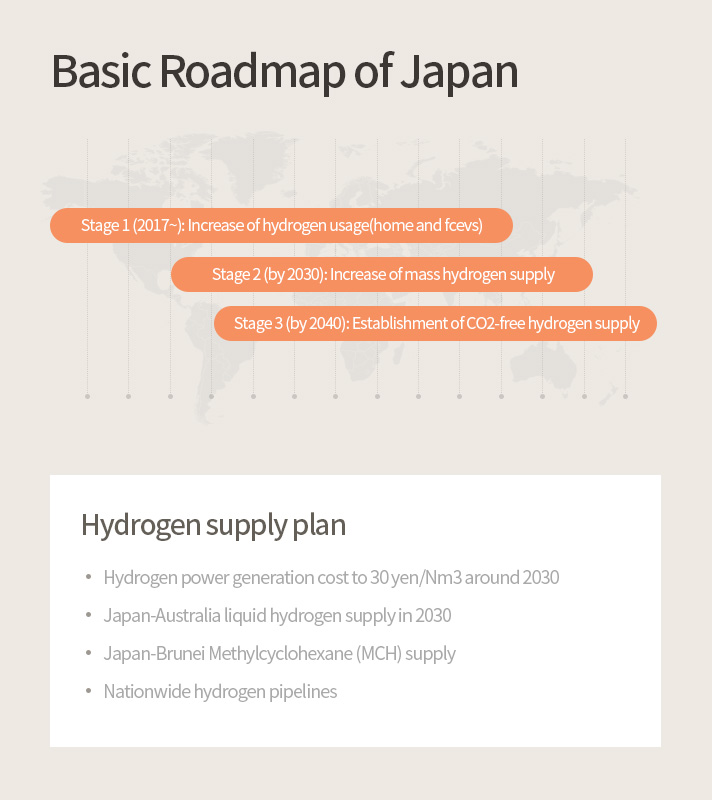
Based on the 'Strategic Energy Plan' announced in 2014, the roadmap was revised in 2016, then again in 2017. To create viable international hydrogen supply chains, upstream initiatives to secure cheap overseas resources through private sector efforts and government-to-government diplomacy will be required along with energy carrier technologies to enable efficient hydrogen transportation and storage. The Japanese government plans to resolve technological, safety, and environmental problems while developing relevant infrastructure including port facilities for hydrogen imports.
Japan currently has the most number of hydrogen refilling stations - 140 (2020 June). Since Japanese automakers, Toyota and Honda, have succeeded in mass-producing FCEVs, hydrogen fuel for home use is also increasing rapidly.
Japan aims to supply 800,000 FCEVs, 1,200 hydrogen buses, and 900 hydrogen filling stations by 2030. The country will also manufacture 5.3 million fuel cells for home use to build a stronger hydrogen energy network.
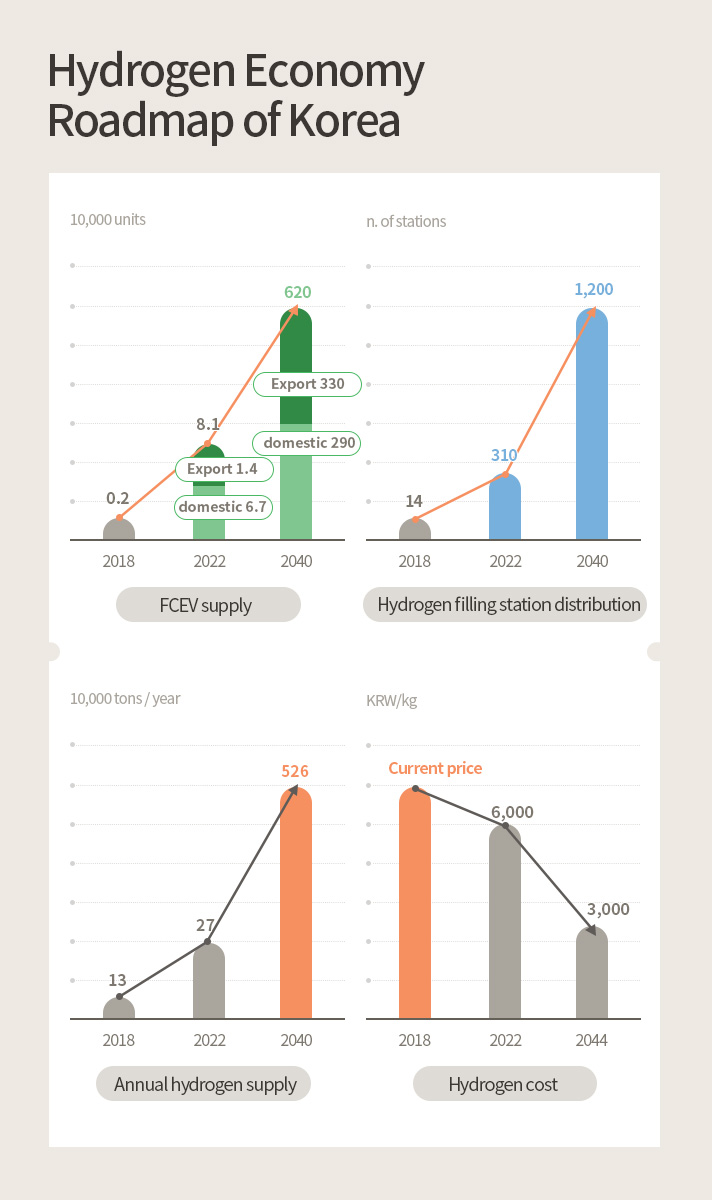
Hyundai Motor Company has succeeded in mass-producing FCEVs and hydrogen commercial vehicles. However, because of the lack of hydrogen refilling stations, the South Korean government initiated the Hydrogen Economy Committee back on July 1st.
According to the committee, mid-sized hydrogen power plants in Gyeongnam, Honam, Jungbu, and Gangwon will supply enough hydrogen fuel, along with 40 small-sized hydrogen plants that are planned to be established by 2025. The committee also announced its plan to build 660 more refilling stations by 2030. The current hydrogen fuel price, 7,000-8,000 KRW per kilogram, will also drop to 3,000 KRW per kilograms by 2040.
Lastly, according to the committee, the government plans to develop materials and equipment for hydrogen mobilities, fuel cells, liquified hydrogen, refilling stations, and electrolyzers. This would require 500 hydrogen-related corporations by 2030 and 1,000 by 2040.
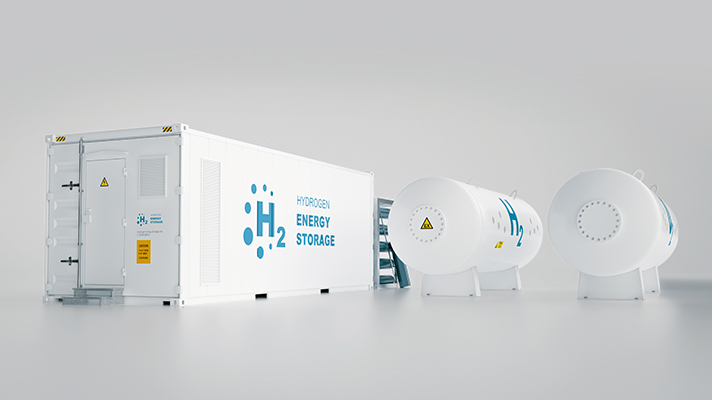
The U.S., Europe, Japan, and South Korea are not the only ones who are working on realizing hydrogen society. Australia, whose climate condition is perfect for generating renewable energy, has built solar power plant in the middle of the desert that is 5.5 times bigger than South Korea itself. The ‘Hydrogen Valley’ of China, on the other hand, is to develop hydrogen buses and trucks.
Though these countries might seem to have all the same hydrogen roadmaps, differences also do exist. While Japan concentrates on building hydrogen supply network, the EU seeks to establish hydrogen facilities for climate-neutrality. South Korea wants more hydrogen production supplies and hydrogen-related companies to lead the global hydrogen economy.
Considering the fact that hydrogen and renewable energy will become the future main energy sources, all these movements will count. And this is because we are all somehow connected - no single country can produce, distribute, and refine energy by itself.